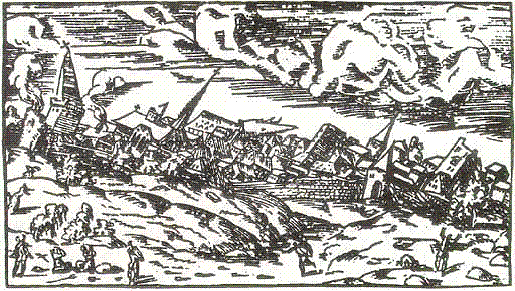Duncan I was king of Scotland from 1034 until he was killed on 14 August 1040 by Macbeth.
Duncan (whose real name was Donnchad mac Crinain) was born about 1000 to a daughter of King Malcolm II. Little is known of his early life. He might have been King of Strathclyde or of Moray prior to taking over all Scotland on Malcom's death. In fact, the Anglo-Saxon Chronicle entry for 1031 tells us that when Cnut traveled north to accept the homage of Scotland
We do not know much about Duncan's reign; little happened until later in it, and what happened then was not good for Duncan. Northumbrians attacked Scotland in 1039, and Duncan lost a battle against the men of Durham in 1040. Following this, Duncan led his army into Moray, where he was killed by Moray men led by Macbeth. Perhaps it was the Northumbrian and Dunham troubles that made Duncan appear weak and motivated Macbeth to become restless in a move to challenge Duncan.
Whatever the reason for the hostility between them, Macbeth's accession to the throne of Scotland went unchallenged, so it appears that Duncan had not created any intense loyalty at home.
 |
| Peter O'Toole as Duncan, portrayed as an old man by Shakespeare, although he was only in his early 30s. |
"... Malcolm, king of the Scots, submitted to him, and became his man, with two other kings, Macbeth and Iehmarc ..."We are not sure where Macbeth was king of, but the entry suggests that he was important in his own right, although the mention here may indicate that Macbeth was subordinate to Malcolm.
We do not know much about Duncan's reign; little happened until later in it, and what happened then was not good for Duncan. Northumbrians attacked Scotland in 1039, and Duncan lost a battle against the men of Durham in 1040. Following this, Duncan led his army into Moray, where he was killed by Moray men led by Macbeth. Perhaps it was the Northumbrian and Dunham troubles that made Duncan appear weak and motivated Macbeth to become restless in a move to challenge Duncan.
Whatever the reason for the hostility between them, Macbeth's accession to the throne of Scotland went unchallenged, so it appears that Duncan had not created any intense loyalty at home.

































